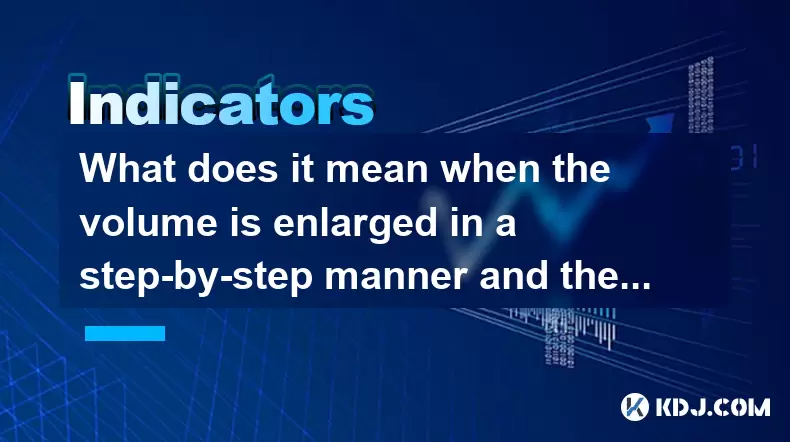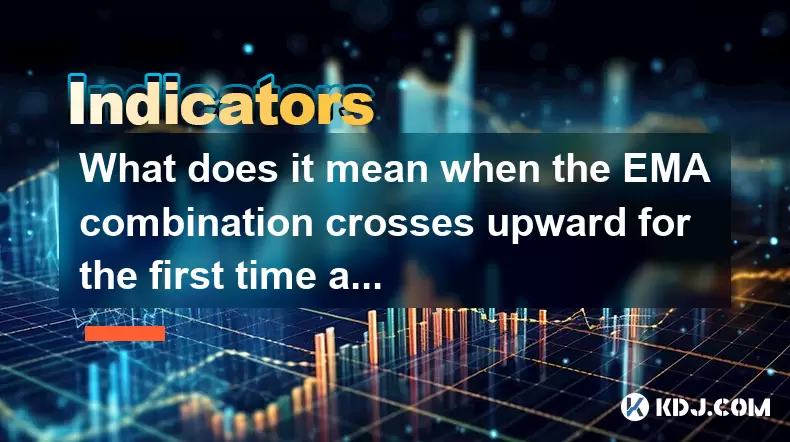-
 Bitcoin
Bitcoin $119800
1.38% -
 Ethereum
Ethereum $3873
3.25% -
 XRP
XRP $3.247
1.85% -
 Tether USDt
Tether USDt $1.001
0.02% -
 BNB
BNB $840.4
5.94% -
 Solana
Solana $190.0
2.55% -
 USDC
USDC $1.000
0.03% -
 Dogecoin
Dogecoin $0.2433
2.69% -
 TRON
TRON $0.3197
-0.05% -
 Cardano
Cardano $0.8367
1.39% -
 Sui
Sui $4.327
3.11% -
 Hyperliquid
Hyperliquid $44.00
0.31% -
 Stellar
Stellar $0.4461
1.76% -
 Chainlink
Chainlink $19.25
4.61% -
 Hedera
Hedera $0.2941
3.90% -
 Bitcoin Cash
Bitcoin Cash $598.4
6.89% -
 Avalanche
Avalanche $26.19
4.67% -
 Litecoin
Litecoin $115.1
0.50% -
 Shiba Inu
Shiba Inu $0.00001427
1.55% -
 Toncoin
Toncoin $3.379
2.01% -
 UNUS SED LEO
UNUS SED LEO $8.966
-0.16% -
 Ethena USDe
Ethena USDe $1.001
0.02% -
 Uniswap
Uniswap $11.04
4.16% -
 Polkadot
Polkadot $4.239
2.00% -
 Monero
Monero $324.6
0.36% -
 Bitget Token
Bitget Token $4.672
2.46% -
 Pepe
Pepe $0.00001294
2.69% -
 Dai
Dai $0.0000
0.01% -
 Cronos
Cronos $0.1443
2.71% -
 Aave
Aave $302.9
1.98%
What does it mean when the volume is enlarged in a step-by-step manner and the small positive line rises?
A step-by-step volume increase with small positive candles signals steady accumulation by smart money, indicating potential bullish momentum in high-liquidity cryptos like Bitcoin.
Jul 28, 2025 at 10:35 am

Understanding Volume and Price Action in Cryptocurrency Trading
In the world of cryptocurrency trading, volume and price movement are two of the most critical indicators used to assess market sentiment. When traders observe that volume is increasing in a step-by-step manner, it typically signals a deliberate accumulation phase by large market participants. This kind of volume behavior is not random; it reflects sustained buying interest over several trading intervals. Each "step" in volume often corresponds with a new wave of buying activity, which may be executed by institutional investors or whales aiming to enter a position without drastically moving the price too quickly.
A small positive line, often seen on candlestick charts as a green or white candle with a modest body, indicates that the closing price is slightly higher than the opening price. When this occurs alongside rising volume, it suggests that buyers are gradually gaining control. The combination of step-by-step volume increase and small bullish candles can be interpreted as a sign of steady accumulation, where demand is consistently outpacing supply without triggering a sharp breakout.
Interpreting the Step-by-Step Volume Pattern
A step-by-step volume increase is characterized by repeated surges in trading volume at specific price levels, followed by periods of lower volume. This pattern often appears during consolidation phases after a downtrend or sideways movement. Each volume spike represents a new round of buying, and if the price holds or slightly increases during these spikes, it shows strength.
- Identify volume bars on your trading chart that are significantly higher than surrounding periods.
- Match each volume spike with corresponding price action—look for small bullish candles during these spikes.
- Observe the intervals between spikes; consistent timing may indicate algorithmic or institutional buying.
- Check for absence of long upper shadows, which would suggest selling pressure at higher prices.
This behavior is common in markets where large players are acquiring assets over time. The gradual nature of the accumulation prevents sudden price surges that could attract too much attention or increase acquisition costs.
Significance of the Small Positive Candlestick
The appearance of a small positive candle during rising volume periods is more meaningful than it may initially appear. Unlike large bullish candles that suggest aggressive buying, small positive candles reflect controlled buying pressure. This control is often a hallmark of smart money activity, where large traders avoid triggering stop-loss orders or FOMO (fear of missing out) among retail traders.
Key features of a small positive line:
- Short body indicating minimal difference between open and close.
- Limited wicks, especially on the upper side, suggesting sellers were quickly absorbed.
- Occurrence at higher volume confirms participation from significant market players.
When such candles appear in sequence during volume steps, they form a bullish bias. Each candle confirms that buyers are willing to step in at slightly higher prices, absorbing sell orders without allowing the price to drop significantly.
How to Confirm the Signal on a Trading Platform
To analyze this pattern effectively, traders should use a reliable cryptocurrency trading platform such as Binance, Bybit, or TradingView. Follow these steps to verify the volume and candlestick behavior:
- Select the desired cryptocurrency pair, such as BTC/USDT or ETH/USDT.
- Switch to a candlestick chart and set the timeframe—1-hour or 4-hour charts are ideal for spotting this pattern.
- Enable the volume indicator below the price chart to visualize volume bars.
- Zoom in on recent price action and look for repeated volume spikes.
- Compare each volume spike with the corresponding candle—ensure that green candles appear during high-volume periods.
- Use horizontal lines to mark price levels where volume spikes occur, checking for consistency.
- Apply a moving average, such as the 20-period EMA, to confirm whether the price is respecting upward momentum.
This process allows traders to visually confirm whether the step-by-step volume increase aligns with positive price responses. Discrepancies, such as high volume with red candles, may indicate distribution instead of accumulation.
Common Misinterpretations and How to Avoid Them
One common mistake is assuming that any increase in volume with green candles is bullish. However, context matters. For example, a small positive candle after a large upward move might indicate exhaustion rather than strength. Traders must consider the location of the pattern within the broader trend.
Other pitfalls include:
- Ignoring market context—a volume spike in a downtrend may be a short-covering rally, not accumulation.
- Overlooking timeframes—a pattern on a 5-minute chart may be noise, while the same on a daily chart carries more weight.
- Failing to check order book depth—a lack of real buy wall support can make the volume pattern misleading.
To avoid false signals, cross-verify with on-chain data or order book analysis. Tools like Glassnode or Kaiko can provide deeper insights into whether the volume is coming from genuine accumulation.
Practical Example Using Bitcoin
Suppose Bitcoin has been trading sideways between $60,000 and $62,000 for several days. Over the past 48 hours, the volume chart shows three distinct spikes—at 12:00 UTC, 20:00 UTC, and 04:00 UTC. Each spike coincides with a small green candle that closes near its high.
- The first spike occurs at $60,800 with a 2x average volume.
- The second at $61,100 with 2.5x volume.
- The third at $61,400 with 3x volume.
Despite the modest candle sizes, the progressive increase in both price and volume suggests that buyers are stepping in at higher levels. There are no long upper shadows, and the price does not drop significantly after each spike. This indicates strong support and potential for further upward movement.
Frequently Asked Questions
What is the difference between step-by-step volume and sudden volume spikes?
Step-by-step volume shows consistent, repeated buying interest over time, often indicating accumulation. Sudden volume spikes, especially without follow-through, may signal panic buying or selling and are less reliable as trend indicators.
Can this pattern occur during a downtrend?
Yes, but it requires careful analysis. If step-by-step volume and small positive candles appear during a downtrend, they may indicate a potential reversal or consolidation, not necessarily continuation of the downtrend.
How do I distinguish between real volume and wash trading?
Check the exchange’s reputation and use on-chain volume data when available. Reputable platforms like Binance or Coinbase have lower wash trading rates. Also, look for matching price action on multiple exchanges to confirm legitimacy.
Does this pattern work on all cryptocurrencies?
It is more reliable in high-liquidity assets like Bitcoin or Ethereum. Low-cap altcoins may show similar patterns due to manipulation, so additional verification is necessary.
Disclaimer:info@kdj.com
The information provided is not trading advice. kdj.com does not assume any responsibility for any investments made based on the information provided in this article. Cryptocurrencies are highly volatile and it is highly recommended that you invest with caution after thorough research!
If you believe that the content used on this website infringes your copyright, please contact us immediately (info@kdj.com) and we will delete it promptly.
- US President, EU Trade, Crypto Spike: What's the Deal?
- 2025-07-28 18:30:12
- Adrian Newman's Endorsement: Ethereum Still King for NFT Collections?
- 2025-07-28 18:30:12
- Crypto's Next Big Meme: Is MAGACOIN Finance the New DOGE or SHIB?
- 2025-07-28 17:15:12
- Altcoins, Cryptos, and 250x Potential: Catching the Next Wave
- 2025-07-28 17:15:12
- BlackRock Veteran Joins SharpLink as Ethereum Treasury Swells: A New Era?
- 2025-07-28 17:50:12
- Bitcoin Laundering, Blockchain Forensics, and Crypto Fraud: A Deep Dive into the Dark Side of Digital Assets
- 2025-07-28 17:50:12
Related knowledge

What does it mean when the EMA combination crosses upward for the first time after sideways trading?
Jul 28,2025 at 03:43pm
Understanding the EMA and Its Role in Technical AnalysisThe Exponential Moving Average (EMA) is a widely used technical indicator in cryptocurrency tr...

What signal does the ROC send when it rises rapidly from a low level and breaks through the zero axis?
Jul 27,2025 at 10:15am
Understanding the Rate of Change (ROC) IndicatorThe Rate of Change (ROC) is a momentum-based oscillator used in technical analysis to measure the perc...

What does it mean when the price breaks through the double bottom neckline and the moving averages are arranged in a bullish pattern?
Jul 28,2025 at 10:57am
Understanding the Double Bottom PatternThe double bottom is a widely recognized reversal chart pattern in technical analysis, particularly within the ...

What signal does the DMA fast line cross the slow line above the zero axis?
Jul 28,2025 at 05:42am
Understanding the DMA Indicator and Its ComponentsThe DMA (Difference of Moving Averages) indicator is a technical analysis tool used in cryptocurrenc...

What does it mean that the rebound is blocked after the moving average is arranged in a short position for the first time?
Jul 26,2025 at 10:51am
Understanding the Short-Term Moving Average ConfigurationWhen traders refer to a 'short position arrangement' in moving averages, they are describing ...

What does it mean that the ZIGZAG low point is raised and the high point breaks through the previous peak?
Jul 28,2025 at 03:28am
Understanding the ZIGZAG Indicator in Cryptocurrency TradingThe ZIGZAG indicator is a technical analysis tool widely used in cryptocurrency trading to...

What does it mean when the EMA combination crosses upward for the first time after sideways trading?
Jul 28,2025 at 03:43pm
Understanding the EMA and Its Role in Technical AnalysisThe Exponential Moving Average (EMA) is a widely used technical indicator in cryptocurrency tr...

What signal does the ROC send when it rises rapidly from a low level and breaks through the zero axis?
Jul 27,2025 at 10:15am
Understanding the Rate of Change (ROC) IndicatorThe Rate of Change (ROC) is a momentum-based oscillator used in technical analysis to measure the perc...

What does it mean when the price breaks through the double bottom neckline and the moving averages are arranged in a bullish pattern?
Jul 28,2025 at 10:57am
Understanding the Double Bottom PatternThe double bottom is a widely recognized reversal chart pattern in technical analysis, particularly within the ...

What signal does the DMA fast line cross the slow line above the zero axis?
Jul 28,2025 at 05:42am
Understanding the DMA Indicator and Its ComponentsThe DMA (Difference of Moving Averages) indicator is a technical analysis tool used in cryptocurrenc...

What does it mean that the rebound is blocked after the moving average is arranged in a short position for the first time?
Jul 26,2025 at 10:51am
Understanding the Short-Term Moving Average ConfigurationWhen traders refer to a 'short position arrangement' in moving averages, they are describing ...

What does it mean that the ZIGZAG low point is raised and the high point breaks through the previous peak?
Jul 28,2025 at 03:28am
Understanding the ZIGZAG Indicator in Cryptocurrency TradingThe ZIGZAG indicator is a technical analysis tool widely used in cryptocurrency trading to...
See all articles

























































































